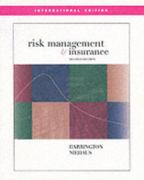






In a typicalcoordination game, (Need help? Read chapter 8.4 of the textbook, here: https://playconomics.com/textbooks/view/playconomics4-2019t3/part3/ch8/s4) two firms decide whether to increase advertising or not. two firms decide whether to cut their prices or not. two players prefer playing the same strategy over playing different strategies. one firm decides whether to stay or exit the market, and the other whether to enter or not. None of these. A coordination game is a type of game in which (Need help? Read chapter 8.4 of the textbook, here: https://playconomics.com/textbooks/view/playconomics420'l9t3/part3/ch8/s4) none of the players have a dominant strategy. both players have a dominant strategy. the expected outcome of the game is always socially optimal. Both A and C. None of the above. In a typical cartel game, (Need help? Read chapter 8.3 of the textbook, here: httpszllplayconomicscom/textbooks/view/playconomics42019t3/part3/ch8/s3) two players prefer playing the same strategy over playing different strategies. two firms decide whether to increase advertising or not. two firms decide whether to cut their prices or not. one firm decides whether to stay or exit the market, and the other whether to enter or not. None of these. In a cartel game, (Need help? Read chapter 8.3 of the textbook, here: httpszllplayconomics'com/textbooks/view/playconomicsA-ZO'I9t3/part3/ch8/53) none of the players have a dominant strategy. both players have a dominant strategy. the expected outcome is one in which both players' profits are maximised. Both B and C. None of the above. Game theory is not applicable either to a perfectly competitive market nor to a monopoly because in both cases, (Need help? Read chapter 8.intro of the textbook, here: httpszl/playconomics.com/textbooks/view/pIayconomics42019t3/part3/ch8/intro) there are no strategic interactions among firms. there are no externalities involved. the markets are characterized by full information' there are strategic interactions among firms. None of these. When there are strategic interactions among firms, (Need help? Read chapter 8.intro of the textbook, here: https://p|ayconomics.com/textbooks/view/playconomics4-2019t3/part3/ch8/intro) firms' independent efforts to maximize their profits may not lead to a socially optimal allocation of resources. forming a cartel can increase their profits. game theory is a useful tool to study firms' behaviour. the market equilibrium may not be Pareto efficient. All of the above are correct. Which of the following is true of a cartel game? (Need help? Read chapter 8.3 of the textbook, here: https://playconomics.com/textbooks/view/playconomics4-2019t3/part3/ch8/s3) O The Nash equilibrium is for both players to cooperate. In the Nash equilibrium, the profit of both players is maximised. O None of these. It is equivalent to a coordination game. O It is an example of a prisonser's dilemma game. Skip Submit answerWhich of the following is true regarding a coordination game? (Need help? Read chapter 8.4 of the textbook, here: https://playconomics.com/textbooks/view/playconomics4-2019t3/part3/ch8/s4) O No player has a dominant strategy. O There may be multiple Nash equilibria. In a Nash equilibrium, the players choose to coordinate their actions. O All the above. O None of the above. Skip Submit answerGame theory is most helpful in understanding markets characterized by (Need help? Read chapter 7 of the textbook, here: https://playconomics.com/textbooks/view/playconomics4-2019t3/part3/ch7/intro) many firms. O a single firm. O a few firms. O Both B and C O All of the above. Skip Submit






















